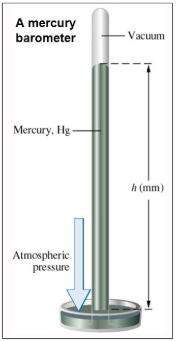
Chemistry, 10.11.2021 21:30 DVM117x017
Nuclear Processes Unit Test
15 of 1815 of 18 Items
Question
Which option correctly compares beta decay and gamma decay?(1 point)
Beta decay releases a particle, while gamma decay only reduces the energy level. Beta decay is a form of nuclear fission, but gamma decay is not.
Beta decay releases a particle, while gamma decay only reduces the energy level. Beta decay is a form of nuclear fission, but gamma decay is not.
Beta decay only reduces the energy level, while gamma decay releases a particle. Neither beta decay nor gamma decay is a form of nuclear fission.
Beta decay only reduces the energy level, while gamma decay releases a particle. Neither beta decay nor gamma decay is a form of nuclear fission.
Beta decay releases a particle, while gamma decay only reduces the energy level. Neither beta decay nor gamma decay is a form of nuclear fission.
Beta decay releases a particle, while gamma decay only reduces the energy level. Neither beta decay nor gamma decay is a form of nuclear fission.
Beta decay only reduces the energy level, while gamma decay releases a particle. Gamma decay is a form of nuclear fission, but beta decay is not.

Answers: 2


Another question on Chemistry

Chemistry, 22.06.2019 00:30
13. calculate the initial concentration (before precipitation) of carbonate ions after the addition of each 0.05 ml of solution b to the 1.00 l beaker of solution a. divide the work among group members and write the answers in the table in model 3. assume the volume change as solution b is added is negligible. 14. notice the initial concentrations of zn2+ - and cu2+ in the table in model 3. a. explain how these were obtained from the data in model 2. b. as solution b is added and precipitates form, do these initial concentrations change? 15. use the data in model 2 to indicate the presence of precipitate (either znco3 or cuco3) after each 0.05 ml addition of solution b in model 3. 16. use the initial concentrations of carbonate ions and zinc ions to calculate the reaction quotient, qsp for the zinc carbonate scenarios in model 3. divide the work among group members and write the answers in the table in model 3. 17. use the initial concentrations of carbonate ion and copper(ii) ions to calculate the qsp for the copper(ii) carbonate scenarios in model 3. divide the work among group members and write the answers in the table in model 3.
Answers: 3

Chemistry, 22.06.2019 07:00
What is the main purpose of patent attorneys? defend the company against legal claims manage financial investments invent new products protect rights to new products and processes
Answers: 1

Chemistry, 22.06.2019 14:00
What is the ph of a solution that has a hydrogen ion concentration of 1.0 * 10 -9 m?
Answers: 3

Chemistry, 22.06.2019 14:30
Select all that apply. using a value of ksp = 1.8 x 10-2 for the reaction pbcl2 (s) pb+2(aq) + 2cl -(aq). the concentration of the products yield a ksp of 2.1 x 10-2:
Answers: 2
You know the right answer?
Nuclear Processes Unit Test
15 of 1815 of 18 Items
Question
Which option correct...
Question
Which option correct...
Questions




Social Studies, 03.08.2021 02:40

English, 03.08.2021 02:40



Advanced Placement (AP), 03.08.2021 02:40

Biology, 03.08.2021 02:40





Mathematics, 03.08.2021 02:40

Mathematics, 03.08.2021 02:40


English, 03.08.2021 02:40

Biology, 03.08.2021 02:40

Mathematics, 03.08.2021 02:40




